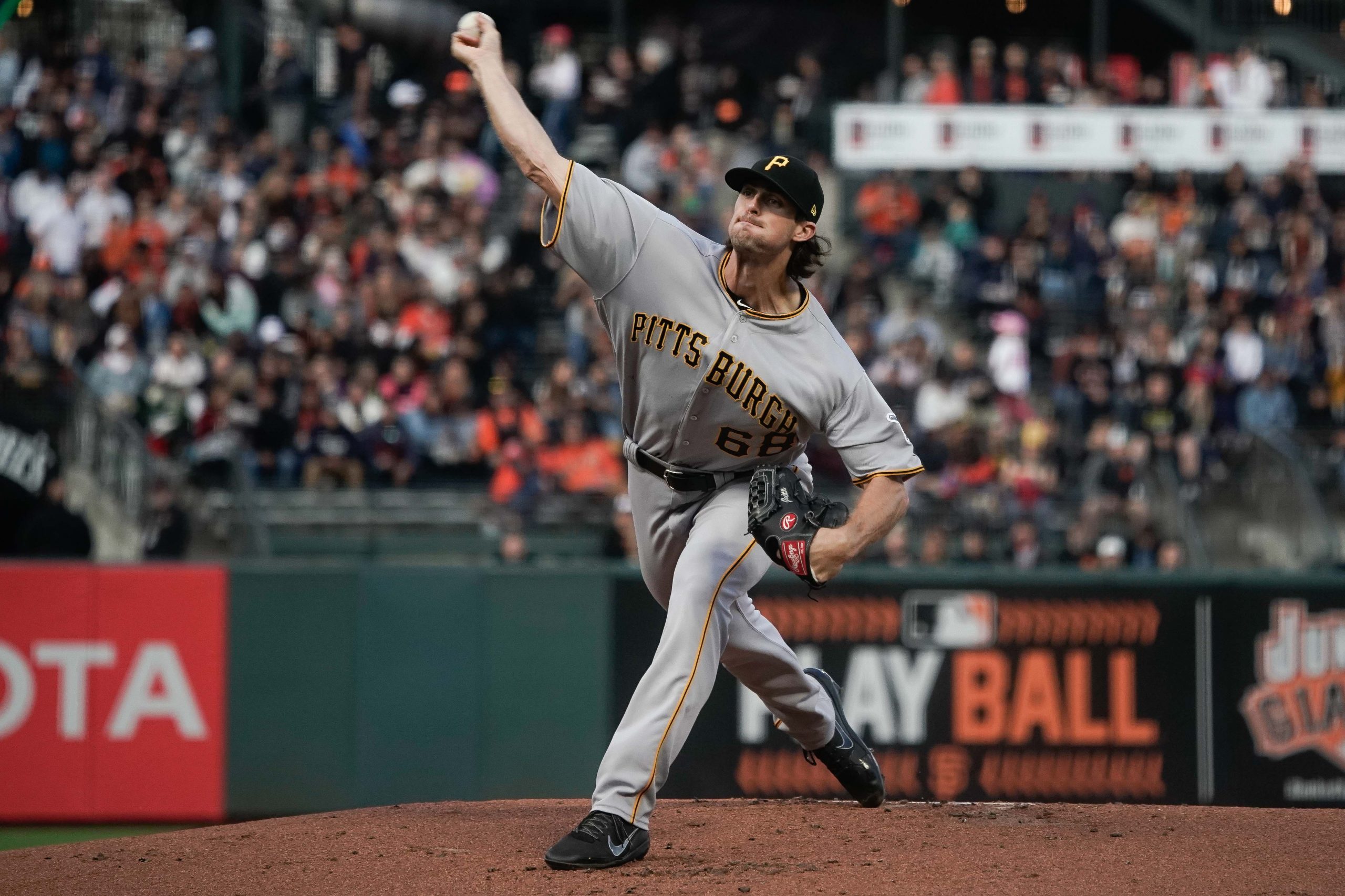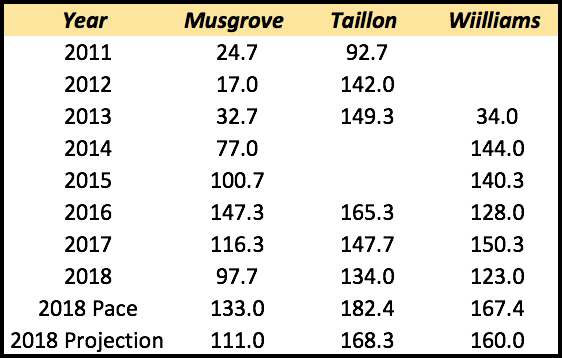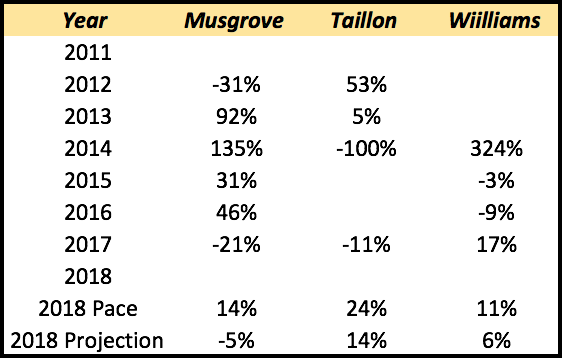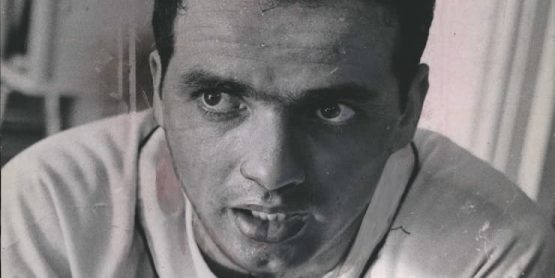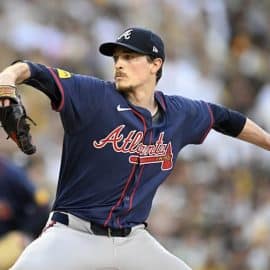The Pittsburgh Pirates started Clay Holmes on Friday as a way to push back their starters from the previous series in Colorado. The decision came at the All-Star break, but let’s take a look at the data.
After Joe Musgrove, Jameson Taillon, and Chris Archer combined for six runs allowed (five earned) in 21 innings, the Pirates pushed them back and started Clay Holmes instead. Noah Hiles, a fellow contributor Pirates Breakdown, asked why Holmes was starting against the Giants. It was a good question, especially as Holmes went out and allowed seven runs in 2.7 innings in a 13-10 loss.
Before the start, Hurdle mentioned that it was part of the plan. His quote via the Pittsburgh Post Gazette:
“We had this talked about after the All-Star break, planning, coming out of Colorado, the rotation… finding a way to give guys some extra rest coming out of Colorado. This has been part of a plan for a while.”
Following the plan is fine, though the Pirates were four out of a playoff spot with 46 games remaining at that point. Starting a Triple-A pitcher who has pitched in four games (two starts) in his career is certainly a bold choice. But Hurdle continued on to say,
“based on experience in the ballpark, talking to our pitchers when they pitched there, how they feel coming out of there, how their bounce-backs have been over the years.”
The part that really stood out was the “how their bounce-backs have been over the years.” Add in this quote from Hurdle that Rob Biertempfel shared on The Athletic, and it gets more complicated:
“It’s different (playing) on the home side when you’re spending the whole year there. When you only go in for one shot and make one start, it’s different.”
The starters currently on the Pirates who have started at Coors Field in the past are Ivan Nova (7/23/2017), Chad Kuhl (7/22/2017), and Trevor Williams (7/21/2017). Neither of the three started in the series at Colorado last week.
So how much difference is their as a visitor playing at Coors and coming back on regular (four days) of rest in your next start? To examine this, I downloaded all starts from 2008-17 and all starts a visiting pitcher made at Coors Field from 2008-17.
Taking the game dates at Coors and adding five, making a common key for the two was simple, player_date. The IDs that matched (418) were the starts a non Rockies pitcher made on regular (four days) rest after pitching at Coors Field. Then taking the pitcher’s seasonal numbers for the year in which they made the start on regular rest after Coors made a comparison rather simple.
Below is the data of the 418 starts on regular rest after visiting Coors and their same season numbers:
Using the chart above, of the starts at Coors Field from 2008-17, the pitcher made his next start on regular (four days) rest a total of 418 times and allowed 4.19 runs per nine innings in that next start. Matching the same season numbers to pitchers who had started after a start on regular rest at Coors, the total was 4.25 runs allowed per nine innings over 10,721 starts.
The difference in RA9, just 0.06 runs, is insignificant, though funny enough the RA9 is lower in their next start after Coors than their season number. However, here’s no difference between the pitcher’s overall seasonal numbers and their next start after Coors on regular rest. Instead of just taking it at face value, here’s the math behind the insignificance at the 95 percent confidence level:
Null Hypothesis: The average difference between runs allowed in starts at Coors and their regular season numbers is zero
Alternate Hypothesis: The average difference in runs allowed in starts at Coors and their regular season numbers is not zero. There is some difference
H0 : X̄1 – X̄2 = 0
Ha : X̄1 – X̄2 != 0
X̄1 is the average RA9 on four days rest after pitching at Coors Field as a visiting pitcher. X̄2 is the average RA9 of same season RA9 by the group of pitchers.
Where D-bar is the difference in X̄1 – X̄2 and sd is the standard deviation of the difference in X̄1 – X̄2. The following is the breakdown of sd, or the standard deviation between the two RA9s:
N, or the sample, in this instance is 418 (the number of instances a starter pitched after a start at Coors on four days’ rest and the same season numbers). Plugging the numbers into the t equation, we get the following:
With t=0.2511 < 1.960, we fail to reject H0 at the 95 percent confidence level. The difference between the RA9 on four days’ rest after starting at Coors Field and that pitchers seasonal RA9 is insignificant.
While some individual pitchers might have some health impact, the high altitude having an underlying conditional on their general wellbeing, there isn’t an impact in how they pitch in their next start in terms of RA9. The Pirates have today off and they will have five more off days after today. If the club was looking to rest their pitchers and giving them an extra day down, the off days would be one option to do it.
***
Clint Hurdle’s comments and the data over the last 10 years of pitchers on four days’ rest after visiting Coors Field don’t align in terms of runs. But perhaps the teams wearable technology told them something else, as Hurdle mentioned the plan occurred before the trip, and the club is trying to not gain one extra day of rest just once, but multiple times with the off days coming.
Trevor Williams, who did not pitch at Coors, went out and tossed seven scoreless innings against the Giants on Saturday night. Joe Musgrove, who started the opener at Coors, tossed six innings of four runs (three earned) as the Giants and Pirates split the series.
The goal of starting Holmes, whose preseason PECOTA projection was a 4.48 ERA, was to give pitchers rest. The decision was to allow starters more rest and recovery than usual. With the youngness of their pitching staff, inning limits might be a concern.
One of the last times that the Pirates were in contention with a young arm was in 2013 with Gerrit Cole, though he was a rookie at the time, something the Pirates rotation doesn’t have. In the book Big Data Baseball, author Travis Sawchik wrote that:
“As the calendar turned to September, Cole was on a pace for 190 pitched innings between the majors and Triple-A, more than a 25 percent jump from his 2012 total of 150…. When asked if Cole had a specific innings limit, Pirates general manager Neal Huntington told a reporter, “If we ever get there, we’ll let you know.”
The Pirates won’t publicly announce inning limits, but Musgrove, Williams, and Taillon haven’t pitched this deep into the season at the Major League level as starters. In the book Sawchik also mentioned that:
“in 2013 the Pirates were one of only twelve major league teams to put at least several of their prized arms through biomechanical evaluations, where pitchers were brought into a lab and had markers attached to their body.”
Biomechanics has been big in baseball, with the facility in Seattle, Washington called Driveline Baseball as the most notable. The Houston Astros have focused on biomechanical data, and their General Manager Jeff Luhnow mentioned biomechanics as a way advanced analytics and the game has chanced since Moneyball was written.
The Pirates wearable technology would lead to the biomechanical data that they would use in that decision making process. That data would provide more of a look into how a pitcher’s body is able to recover after starting in Coors Field, something that wouldn’t be seen in the RA9 data. The Pirates in starting Holmes looked for rest and recovery for the long term over one individual start.
Without access to that data, answering the question on if there is a difference can’t be answered. But given the youth of the staff, the trio of Musgrove, Taillon, and Williams, looking at past innings might explain another part of the aspect of pushing them back a day. Just like with Cole, the Pirates won’t public the limit but here’s the innings those three pitchers have had in professional ball:
Musgrove and Taillon will likely exceed their 2018 projections, as the difference between the pace and their projections are 22 and 14.1 innings respectively. Musgrove has been in this territory in the past, throwing 147.3 innings in 2016, but Taillon and Williams have tossed over 160 innings just once combined.
Taillon eclipsed 160 in 2016, but he also missed 2014 and parts of 2015 with Tommy John surgery, missed the rest of 2015 with a hernia, and then he overcame a battle with cancer last season. The amount of damage on his body over the last few years can be a concern, as he’s approaching a 180 inning pace this season.
Williams, on the other hand, doesn’t have an injury riddled past, and is just edging his way to a career high in innings as he is in his second year. Musgrove started the year off on the disabled list and finished 2017 in the Astros bullpen. Along with Taillon, Musgrove’s innings and how he performs to end the season will be something to watch. Below are the percent changes year-to-year in innings:
Musgrove is on pace to increase his innings 14 percent from last year, and Williams just 11 percent. Those two pitchers are pacing on just a natural progression in innings as they gain experience and start all year. Taillon, on the other hand, is looking at a 24 percent increase on innings. That’s a much higher increase than the other two, and is similar to Cole’s 2013.
But these three pitchers are different from Cole, as they’re all in at least their second year compared to Cole’s rookie campaign. The other difference was the Pirates were in contention, looking like a team that could go deep into the playoffs, extending further Cole’s innings. This team appears to be just a wild card contender, competing to get into a one game playoff.
Between his start on August 7th and his next start on August 14th will be six days of rest for Taillon, two days extra compared to normal. The Pirates also have five more off days after today to move around the rotation to keep their pitchers fresh not just this year, but in the hopes of going forward.
***
In terms of performance, a pitcher’s RA9 is no different starting on regular rest after being a visiting pitcher at Coors Field and their same season RA9. On an on the field aspect, the change isn’t enough of a reason to throw Clay Holmes when the team is competing for a wild card spot, and they currently sit five games behind the Brewers for the second wild card spot.
Instead of a performance level, the wearables and the biomechanics might say something else about the recovery process, focusing more on the rest of the season health and development than one game. The trio of young pitchers are coming close to career highs, though only Jameson Taillon is on pace to exceed last year’s innings, and he has battled injuries and cancer over the last five years. Limiting him could be beneficial.
The Pirates won’t be public on what the limit for pitchers and what the biomechanic data says. If that was the root for the rest, there might be some benefits. However, none of the Pirates young starters are really at a risk of increasing their innings by a large percentage. Starting at Coors and on regular rest the next time out is no different from the season numbers, the pushing back of starters to start Holmes seems like a way the club was trying to outsmart themselves, and it may have cost them a game in the wild card race.
Add The Sports Daily to your Google News Feed!
